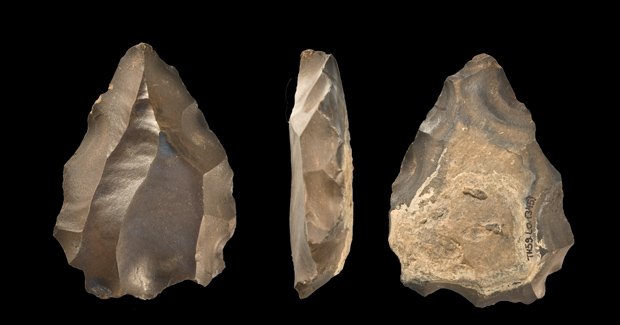Stone tools reveal identity of first human migrants

THE IDENTITY OF ONE of the first group of human beings to leave Africa has been narrowed down, according to new research. And the discovery pushes back the expansion of early humans out of Africa by tens of thousands of years.
The international team of archaeologists, including an Australian, has found more than 100 sites in the Middle Eastern nation of Oman which it says are “a trail of stone breadcrumbs” left by early humans.
It’s the first time sites such as these have been found outside Africa.
“After a decade of searching in southern Arabia for some clue that might help us understand early human expansion, at long last we’ve found the smoking gun of their exit from Africa,” team leader Dr Jeffrey Rose from the University of Birmingham said in a statement.
“What makes this so exciting is that the answer is a scenario almost never considered.”
Early human migration tens of thousands of years earlier than thought
The scientists used a technique known as Optically Stimulated Luminescence to date one of the sites. They determined that toolmakers had entered the Arabian Peninsula from Africa at least 106,000 years ago, tens of thousands of years earlier than previously thought.
Also surprising was that many of the sites were found inland. This has challenged the previous belief that early humans moved through southern Arabia mainly along the coast.
“Here we have an example of the disconnect between the theoretical models versus real evidence on the ground,” report co-author Professor Emeritus Anthony Marks from Southern Methodist University in the US said in a statement. “The coastal expansion hypothesis looks reasonable on paper, but there is simply no archaeological evidence to back it up.”
Among the eight researchers is archaeologist Richard Roberts, who is based at the University of Wollongong. The findings have been published in the journal PLoS One.
RELATED STORIES

